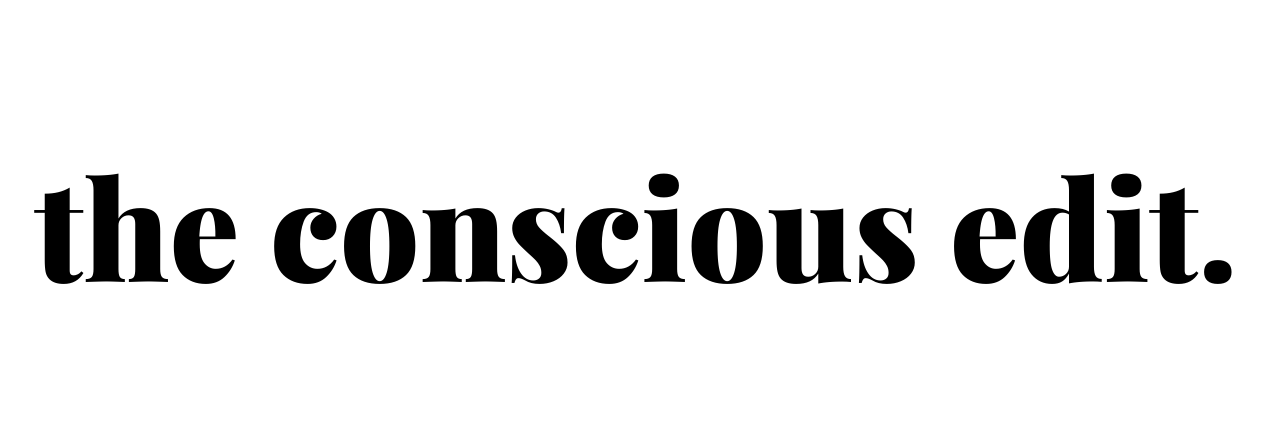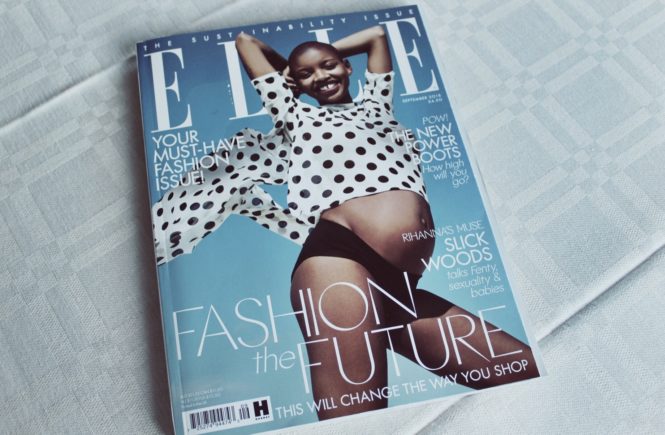With its biggest issue of the year – the September Issue – UK fashion magazine ELLE has dedicated it to sustainable fashion – to show it’s also aware of this growing trend or maybe to start creating change? Other magazines have done it already with Marie Claire and Swedish Damernas Värld doing sustainability issues, and Vogue Australia leading the way since hiring Clare Press as Sustainability Editor-at-Large, which shows a genuine commitment. And this is what it ultimately comes down to – is it a genuine commitment to changing the industry or is it a one-off to show you’re not all bad?
Before I say anything else I also need to say that I don’t normally read ELLE, I assume I’m not its target reader, and I therefore won’t be able to say anything about whether this issue is massively different to ‘normal’ issues. But I will reflect on what I’m taking away from reading it as well as what the future may or could bring to the industry.
Pledges and promotion
As soon as you open the magazine and start turning the pages you can feel it’s a special issue because the paper stock is less plastic than normal, and this is explained in more detail as ELLE dedicates a page to introduce its efforts to create a more environmentally friendly magazine. The work has been done in collaboration with sustainability consultants Akerbrant and ELLE further outlines continued sustainability work going forward. This is presented as part of ELLE’s pledges where the magazine has considered what it will commit to doing going forward. And the pledges are good, because they don’t just focus on fashion, but on what the business ELLE needs to be doing and how it can change its ways of working.
When it comes to the content and the fashion, it’s a good start and ELLE promotes eco-fashion leaders like Stella McCartney, eco writers like Naomi Klein as well as influencers like Pandora Sykes who is reflecting on un-healthy consumption habits. It is a good start at for the ELLE readers – maybe it’s the right amount of information and inspiration – but I can’t help feel it’s rather weak in terms of genuinely trying to change an industry that is so damaging to the planet. Stella highlights in her interview that the fashion industry is way behind other industries when it comes to sustainability as she says: “Everyone else is changing, but the fashion industry is doing the same old stuff”. And maybe that’s the biggest issue? That the industry is doing the same old stuff, but, in the case of this ELLE issue, is including a few other perspectives and adding some vintage pieces into the shoots, when in fact, we need bigger changes, urgently.

The Editor’s Letter is there to set the tone of the issue and in this case, even though Anne-Marie Curtis highlights a shift that is needed, there is one line that really annoys me and it stays with me as I’m reading my way through the rest of the magazine. She highlights that we need to be more conscious of what we buy and question our purchases more (which is of course true) but the question she suggests we ask ourselves is “Will I wear it on more than one occasion?”. This should never be a legitimate question to ask yourself but in a world of never-wearing-anything-twice-in-public, this is presented as a question to ask yourself to be more sustainable and probably, sadly, gives a clear indication of what the world of fashion is like.
What we should be asking ourselves is whether an item is something we’ll wear more than 30 times – will we wear it next season, and will we wear it in 10 years? That’s how we truly shift our approach to how we buy clothes, how we look after them, and how we make the most of what we have. But the way business still works, and the way the fashion industry – with its magazines and culture of over consumption – works, doesn’t quite support a shift towards more sustainable consumption.
The commercial aspect
Even though I’m definitely one of those people who still love reading real books and print magazines, I’ve pretty much completely stopped buying fashion and women’s magazines (apart from an issue of Porter every now and then if I’m travelling) and I would say it’s because of the heavy focus towards unhealthy consumption. Even though a stylish shoot can be inspiring, it’s easy to get put off when you realise you can’t actually buy any of the items on the page because they’re all a month’s salary, each. And the fact that you have to work your way past 38 pages of ads before you even get to the content page annoys me, even though some can of course be a great source of inspiration.
I appreciate fashion magazines need to be visual and they can’t rely on the written word as much but if I’m buying a magazine I also want an interesting and educational read. A big challenge for fashion magazines is of course the growth of social media as many of us are getting our fashion inspiration from street style influencers on Instagram instead of the traditional magazines. So, are the magazines redundant? Are influencers better at inspiring us and more interestingly; are they better at inspiring us to be more creative? Because from a sustainability perspective, this is potentially what it needs to be about – less consumption craze and more creativity inspiration. But then again, if the influencer you’re following is dependent on ads and paid partnerships then they’re potentially pushing and promoting consumption as much as a magazine.

Finding sustainable business models that support business growth without ruining the planet is an urgent need across the world, and fashion magazines are very much in need of finding models that work. I don’t have the perfect solution for this, and I appreciate ad revenue is crucial, but for the sake of the environment it’s not sustainable when it encourages over consumption or promotes brands that aren’t sustainable.
Positive changes with real impact needed
ELLE highlights changes it can do going forward to be kinder to the planet, and it shows by example in this issue. For example, the shoots took place in the UK to avoid having to fly, and this would most definitely be something to build on. Fashion magazines overall should be more creative with shoot locations because maybe we don’t need another shoot on a tropical beach? Especially as it doesn’t reflect where most of us spend our time and where we are most likely to be wearing our clothes.
Doing things in a new, different way will be crucial for fashion magazines to keep up with the sustainable revolution and looking at the role they have in mass consumption is essential. How can they be less about product and consumption promotion, and more about inspiration? Could the magazines focus more on their readers and their communities, hosting inspiration courses in key cities, consultancy work for readers interested in developing their style, and a stronger focus on paid-for-content online to avoid ads and give the reader genuine inspiration rather than shopping tips? And when shopping or trend tips are included, these should focus on brands that have strong sustainability credentials.
The Sustainability Issue is a good effort from ELLE, and I encourage small steps because no one can change everything at once, but I’m also feeling that we need more action than talk. A one-off issue where these topics are discussed won’t be enough to create the bigger change we urgently need to shift our consumption patterns on a more healthy and sustainable path. Instead, I’m hoping it’s a step in the right direction where ELLE and others can be bold enough to start changing the industry, and where the readers encourage and celebrate them for it.

